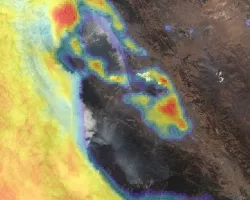
Twenty-three counties in Kenya experience frequent drought, which damages agricultural productivity and threatens the health and wellbeing of millions. NASA DEVELOP partnered with NASA SERVIR, the Regional Centre for Mapping of Resources for Development (RCMRD) and Kenya’s National Drought Management Authority (NDMA) to enhance drought-detection capacity using NASA Earth observations. Currently, the NDMA publishes monthly Early Warning Bulletins with drought conditions for each arid or semi-arid county in Kenya. These bulletins utilize the Vegetation Condition Index (VCI) from the Moderate Resolution Imaging Spectroradiometer (MODIS) as well as a variety of biophysical, social and economic drought indicators, but do not allow for advanced forecasting. To improve drought-monitoring capabilities, the team created a Combined Drought Indicator (CDI) using the Regional Hydrologic Extremes Assessment System (RHEAS) model and data from Aqua and Terra MODIS and the National Centers for Environmental Prediction. The CDI combined precipitation anomalies, soil moisture anomalies, evaporative stress, and VCI according to weights determined by principal component analysis. To evaluate the performance of the CDI across Kenya, the team compiled a dataset of drought events from historical reports and the NDMA’s records. Results suggested that the CDI detected drought earlier than VCI alone. However, more validation is needed to ensure that the CDI accurately and consistently detects drought earlier than current warning systems. In order to better understand the behavior of individual indices and the potential for earlier drought detection, the team also conducted a time-lag analysis. The team found that VCI responds to drought, on average, one month later than most other indices included in the CDI, suggesting that incorporating additional indices could improve early drought warning systems in Kenya.



